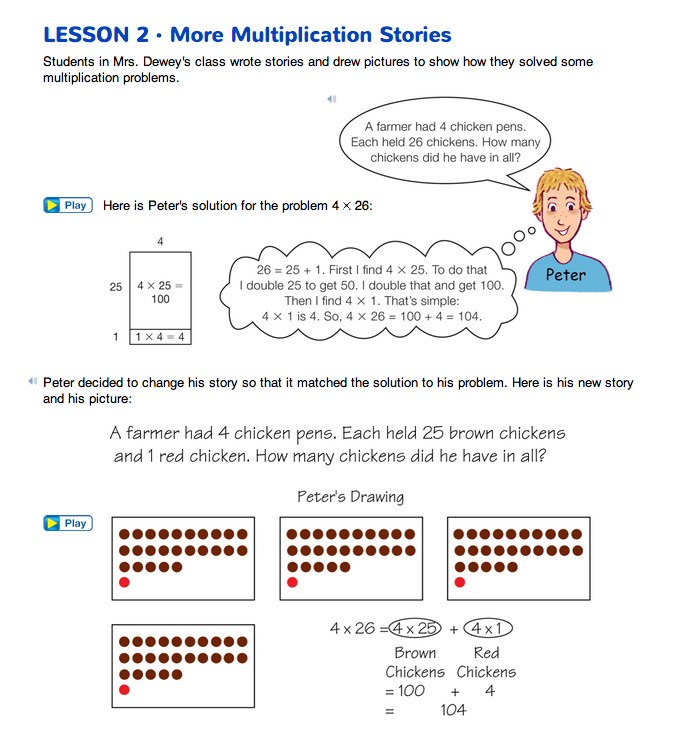More Multiplication Stories
Est. Class Sessions: 2Developing the Lesson
Part 2. Break-Apart Products and Matching Stories
Many of the ways students solve their multiplication problems will involve breaking numbers apart into sums of easier products as in the example methods. Ask students to read the first page of the More Multiplication Stories pages in the Student Guide.
Point out that Peter wrote two stories. Notice the first story does match the multiplication problem but it does not match the way he solved the problem. Since he broke 26 into two parts (25 + 1), he made 25 chickens brown and 1 chicken red in each of the 4 pens. His story now matches the way he solved the problem.
Ask:
Select volunteers to describe their solutions to 4 × 26 from Part 1 that involved breaking numbers apart. Ask them to share the corresponding stories they wrote.
For each story and solution shared, ask:













